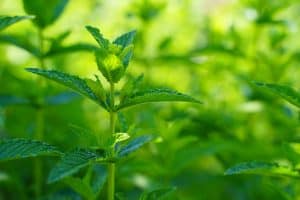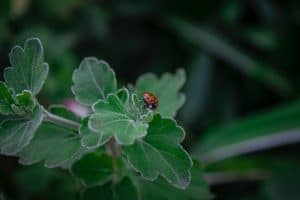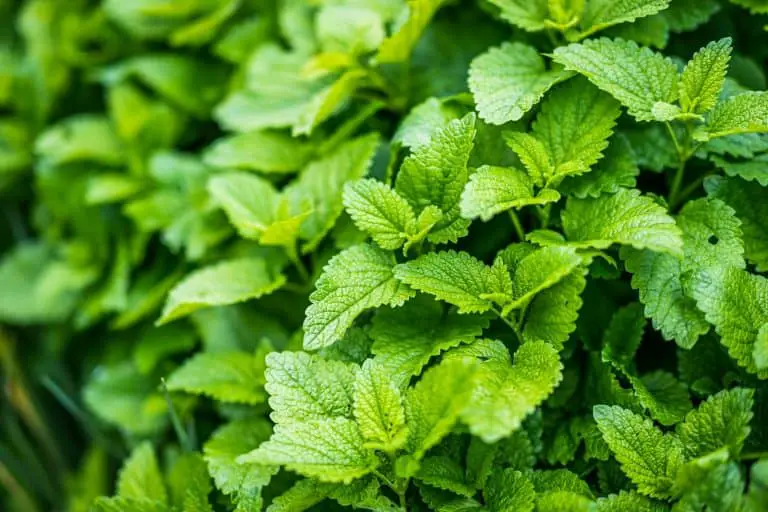Imagine your garden as a buzzing hub of activity, where bees, butterflies, and other pollinators flit from plant to plant. It’s not just a dream—it’s what happens when you cultivate pollinator-friendly herbs. These plants are not only a feast for the eyes but also a banquet for our precious pollinators.
I’ve discovered that certain herbs like thyme, lavender, and sage aren’t just for seasoning my dishes; they’re also some of the best invitations I can offer to pollinators. By choosing the right herbs, I’m creating a haven for these vital creatures, ensuring that my garden is not only beautiful but also plays a critical role in supporting local ecosystems.
Benefits of Pollinator-Friendly Herbs

The Allure of Pollinator-Friendly Herbs
When I think about designing my herb garden, I prioritize featuring pollinator-friendly herbs. Not only do these herbs offer a vibrant palette of colors and fragrances, they also play an essential role in attracting pollinators such as bees, butterflies, and hummingbirds. By planting herbs like lemon balm, bee balm, and varieties that exhibit tiny flowers, you can ensure your garden buzzes with life from early spring into late autumn.
Harnessing the Power of Flowering Herbs
Flowering herbs like lemon balm and bee balm are the cornerstone of any space dedicated to attracting pollinators. These plants bloom profusely, providing nectar-rich flowers that are irresistible to bees and their kin. With lemon balm’s sweet, citrus-scented leaves and bee balm’s showy, tubular flowers, my herb garden not only supports the local ecosystem but offers a multisensory experience. Let’s not forget the additional benefit of edible flowers, which add both flavor and flair to any dish.
Herb Gardens as Pollinator Hotspots
Creating a herb garden for bees is a joyous endeavor. I especially love the moments when I observe seed-eating birds joining the pollinators’ dance, creating a symphony of natural interactions. As these herbs flower, their blossoms herald the arrival of life. Moreover, most flowering herbs are decidedly easy to grow and require minimal care. From the fiery spikes of anise hyssop to the pastel hues of sage flowers, each herb uniquely contributes to this living tapestry.
By planting a variety of these pollinator-friendly herbs, I’ve been able to watch my garden gradually transform into a sanctuary for both pollinators and people. Each time I step outside, I’m greeted by the hum of busy bees and the flutter of butterflies, all sustained by the herbal haven I’ve cultivated. Growing such a garden isn’t just rewarding—it’s an active step toward supporting biodiversity and fostering a balance with nature.
Choosing the Right Herbs for Pollinators

Cultivating a Herb Garden for Bees
To foster a herb garden for bees, it’s imperative to select herbs that attract pollinators. My strategy revolves around not just aesthetic appeal but also on pollinator-friendly herbs that serve a dual purpose. These selections not only charm the senses with their fragrant leaves and edible flowers but also offer rich nectar sources for our tiny winged friends.
Starting with lemon balm (Melissa officinalis), it’s a top pick in my garden for its mint family lineage and ability to bloom with tiny flowers from early spring well into the season. Not only does it attract bees, but it’s a favorable herb for its aromatic, medicinal properties. The bees seem to agree, constantly buzzing around this perennial herb.
Another fabulous herb is bee balm. Its vibrant purple flowers are a magnet for all types of pollinators, including native bees, hummingbirds, and even butterfly caterpillars looking for a host plant. This plant not only attracts bees but also adds a splash of color to any herb garden.
For a herb that blooms with clusters of tiny flowers, consider adding flowering herbs like thyme or oregano. These versatile plants offer a feast for tiny pollinators and seed-eating birds, while their leaves supply savory flavors for dishes.
Expanding Pollinator-Friendly Options
In my experience, attracting pollinators goes beyond just the common varieties. Herbs flower in myriad ways, and providing a range of floral structures and herb types ensures that you cater to a diversity of pollinators. Edible flowers from herbs like calendula or nasturtiums provide a seasonal treat for both humans and insects alike.
Designing a Pollinator-Friendly Garden

Creating a pollinator-friendly garden isn’t just about planting any flowering plant; it’s about choosing those that provide the most benefit to the bees and butterflies you’re looking to attract. I’ve learned through my gardening journey that the right mix of herb garden for bees, flowering herbs, and native plants can create a paradise not only for tiny pollinators but also for the aesthetic beauty of my space.
Incorporating Pollinator-Friendly Herbs
When I’m selecting herbs to include in my bee sanctuary, I focus on those with edible flowers and tiny flowers that bloom from early spring into the warm months. Herbs like lemon balm and bee balm are fantastic starters for a herb garden for bees because they’re not only attractive due to their vibrant colors and alluring scents but their flowers also offer a rich source of nectar.
Lemon balm (Melissa officinalis), a fabulous herb that’s part of the mint family, is irresistible to bees and boasts a fresh, lemony scent. Bee balm (Monarda), with its distinctive purple flowers, is particularly effective at attracting pollinators like hummingbirds and butterflies, along with bees.
My favorite tactic has been planting herbs in clusters to increase visibility, which significantly helps in attracting pollinators. For example, a sweep of bee balm with its fiery red or pink flowers, interspersed with the soft lavender of early summer blooming lemon balm, creates an irresistible patchwork for bees.
Providing Essential Resources for Pollinators
Creating a Haven with Pollinator-Friendly Herbs
When setting up an herb garden specifically designed to be a haven for bees and other pollinators, it’s important to consider the variety of plants that’ll effectively serve these tiny guests. Integrating pollinator-friendly herbs into my garden has not only enhanced its beauty but has also significantly increased the presence of pollinators.
Lemon balm (Melissa officinalis), for instance, is a standout herb that’s irresistible to pollinators. This perennial herb graces gardens with clusters of tiny flowers that attract a variety of bees, including those ever-important native bees. Not only does it bring in the tiny pollinators, but this fabulous herb fills the air with a refreshing citrus scent that’s a delight for the senses.
Another magical plant is bee balm (Monarda), which showcases vibrant red, pink, or purple flowers come early summer. The tubular shape of the flowers is perfect for attracting hummingbirds as well as a multitude of bees. Its duality as both an ornamental and edible flower makes bee balm a beneficial addition to any garden aimed at attracting pollinators.
Flowering herbs, in general, are critical as they provide nectar and pollen throughout different seasons. Early spring arrivals like chives kick off the season with their pinkish-purple flowers, offering the first sips of nectar after a long winter. Planting herbs in succession ensures that as one herb’s flowers begin to fade, another’s burst forth, maintaining a constant source of food. This sequential blooming can significantly help seed-eating birds and pollinators find continuous sustenance.
A Symphony of Herbs Flower Together
In addition to individual species, the concept of a community garden full of diverse, flowering herbs is an enthusiastic mission of mine. Imagine tiny flowers of thyme intermingling with the edible flowers of basil, each providing a different flavor of nectar. This variety doesn’t just serve to attract pollinators but also adds a rich tapestry of colors and textures to the garden landscape.
In Summary
Creating a haven for pollinators is simpler than you might think. With the right selection of herbs like lemon balm and bee balm, you’re not just adding beauty to your garden but also playing a crucial role in supporting local ecosystems. Remember, the vibrancy and health of your garden reflect the care you put into choosing the best plants for our pollinator friends. So roll up your sleeves, plant those herb clusters, and watch as your garden becomes a buzzing hub of activity. Together, let’s make our gardens a sanctuary for these vital creatures.
Other suggested articles:


